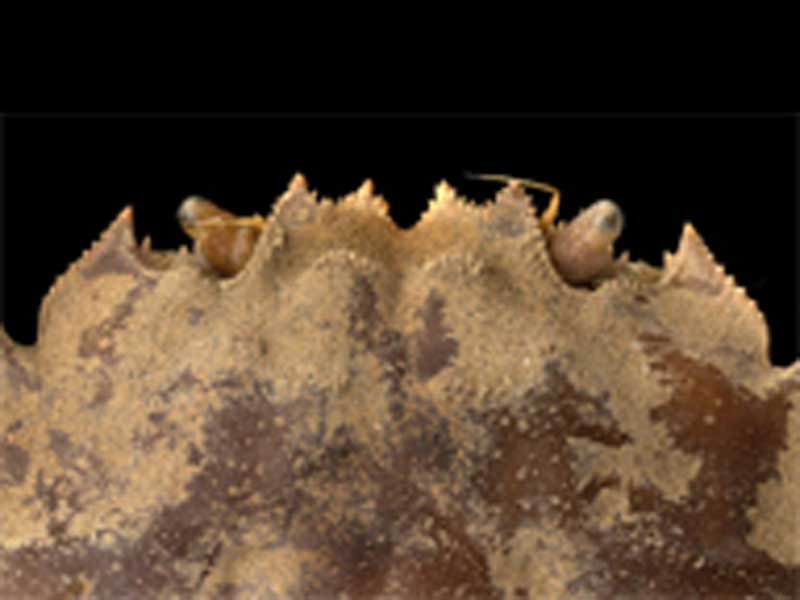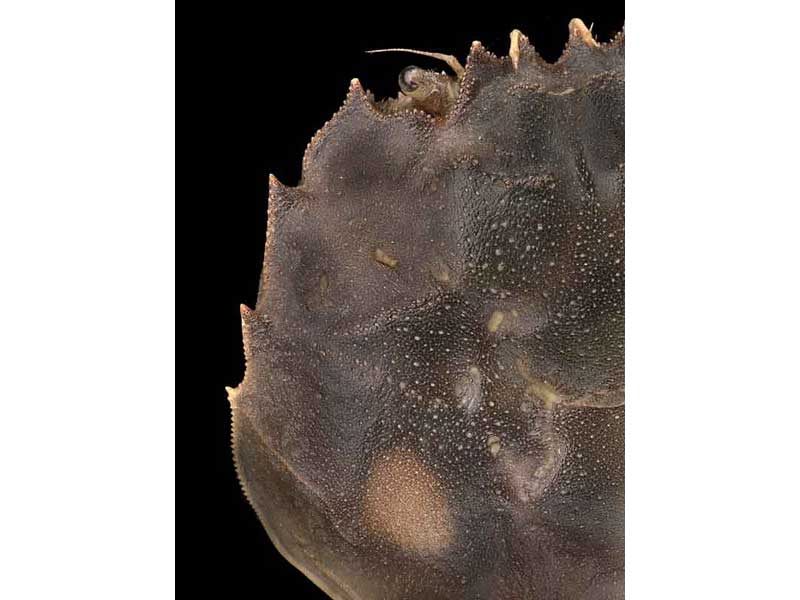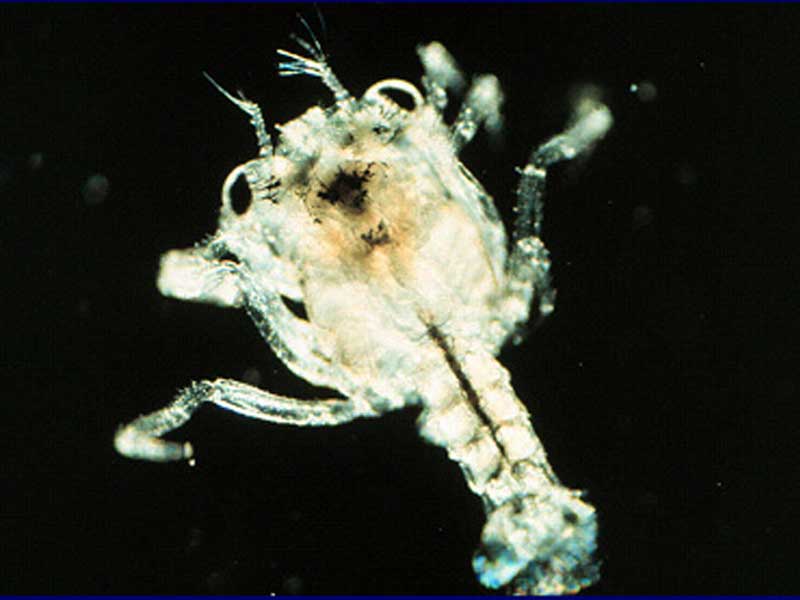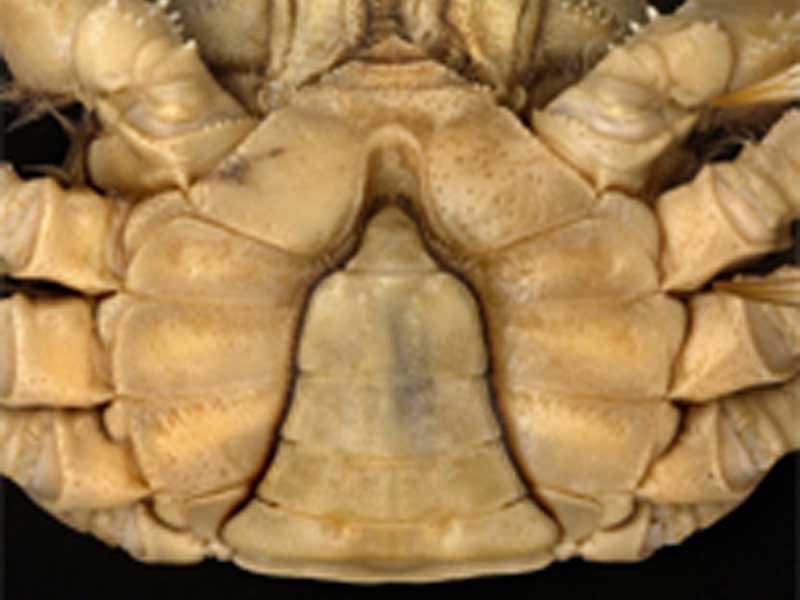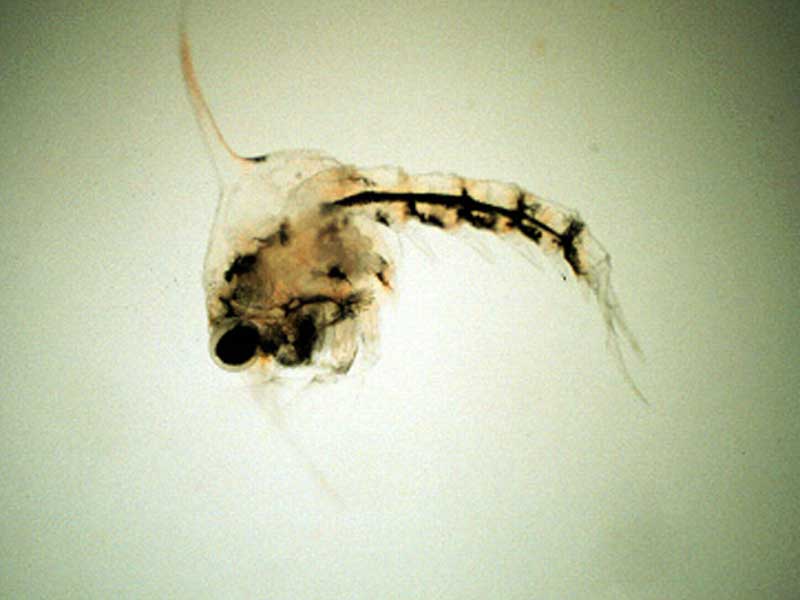Chinese mitten crab (Eriocheir sinensis)
Distribution data supplied by the Ocean Biodiversity Information System (OBIS). To interrogate UK data visit the NBN Atlas.Map Help
| Researched by | Ken Neal | Refereed by | Admin |
| Authority | H. Milne Edwards, 1853 | ||
| Other common names | - | Synonyms | - |
Summary
Description
Eriocheir sinensis is a large crab with a maximum carapace length of 56 mm. The carapace is quite square in outline, narrowing towards the front and has four lateral teeth on each side. The carapace is olive green in colour, the legs paler. The most obvious distinguishing feature of Eriocheir sinensis is the dense mat of hair on the claws. The leading edges of the legs are also very hairy.
Recorded distribution in Britain and Ireland
Common in the River Thames and River Medway, with isolated recores from River Tyne (Newcastle), the River Tamar (near Plymouth) and recently Dungeness, Kent. Also recorded from Southfields Reservoir near Castleford, Yorkshire.
Global distribution
The Chineses mitten crab originates in the waters around Vladivostoc, Russia and south China, including Japan and Taiwan. It has spread around Europe and is found in Finland, Sweden, Russia, Poland, Germany, the Czech Republic (Prague), Netherlands, Belgium, and France. It has also been recorded from North America, and has become established throughout much of the San Francisco Estuary.
Habitat
In rivers and lakes, burrowing into sediment banks. Adults migrate to estuary mouths to breed and the females may overwinter in deep, fully saline water.
Depth range
-Identifying features
- Chelae covered in a mat of fine hair.
- Carapace with four lateral sharp teeth.
- Second to fifth walking legs (pereiopods) stout and flattened.
- Longest segment of legs (the merus) bears a distinct distal spine.
Additional information
A native of China introduced into Germany in 1912 now dispersed widely in NE Europe (see Clarke, 2005). This crab may be found in isolated bodies of freshwater as it will cross dry land to colonize new areas. Scientific name Eriocheir sinensis is derived from the Greek and means wool hand of the Chinese, hence the vernacular or common name the Chinese mitten crab (Clarke, 2005). For further information see the GB Non-native Species Information Portal.
Listed by
- none -
Bibliography
Clark, P., 2005. Chinese mitten crab - Eriocheir sinensis. Marine Aliens pages. [On-line] http://www.marlin.ac.uk/marine_aliens/marine_aliens.htm,
Clark, P.F., Rainbow, P.S., Robbins, R.S., Smith, B., Yeomans, W.E., Thomas, M. & Dobson, G., 1998. The alien chinese mitten crab, Erocheir sinensis (Crustacea: Decapoda: Brachyura), in the Thames catchment. Journal of the Marine Biological Association of the United Kingdom, 78, 1215-1221.
Eno, N.C., Clark, R.A. & Sanderson, W.G. (ed.) 1997. Non-native marine species in British waters: a review and directory. Peterborough: Joint Nature Conservation Committee.
Hayward, P.J. & Ryland, J.S. 1990. The marine fauna of the British Isles and north-west Europe. Oxford: Oxford University Press.
Herborg, L.-M., Bentley, M.G. & Clare, A.S., 2002. First confirmed record of the Chinese mitten crab (Erocheir sinensis) from the River Tyne, United Kingdom. Journal of the Marine Biological Association of the United Kingdom, 82, 921-922.
Howson, C.M. & Picton, B.E., 1997. The species directory of the marine fauna and flora of the British Isles and surrounding seas. Belfast: Ulster Museum. [Ulster Museum publication, no. 276.]
Ingle, R., 1997. Crayfishes, lobsters and crabs of Europe. An illustrated guide to common and traded species. London: Chapman and Hall.
Ingle, R.W. & Andrews, M.J., 1976. Chinese mitten crab reappears in Britain. Nature, 263, 638.
Datasets
Cofnod – North Wales Environmental Information Service, 2018. Records of Invasive Non Native Species held on the Cofnod database. Occurrence dataset: https://doi.org/10.15468/nxdbhu accessed via GBIF.org on 2018-09-25.
Cumbria Biodiversity Data Centre, 2017. Cumbria Non Native Invasive Species. Occurrence dataset: https://doi.org/10.15468/3exspu accessed via GBIF.org on 2018-09-25
Kent Wildlife Trust, 2018. Kent Wildlife Trust Shoresearch Intertidal Survey 2004 onwards. Occurrence dataset: https://www.kentwildlifetrust.org.uk/ accessed via NBNAtlas.org on 2018-10-01.
National Trust, 2017. National Trust Species Records. Occurrence dataset: https://doi.org/10.15468/opc6g1 accessed via GBIF.org on 2018-10-01.
Nature Locator, 2017. AquaInvaders. Occurrence dataset: https://doi.org/10.15468/nagz1b accessed via GBIF.org on 2018-10-01.
NBN (National Biodiversity Network) Atlas. Available from: https://www.nbnatlas.org.
Norfolk Biodiversity Information Service, 2017. NBIS Records to December 2016. Occurrence dataset: https://doi.org/10.15468/jca5lo accessed via GBIF.org on 2018-10-01.
OBIS (Ocean Biodiversity Information System), 2025. Global map of species distribution using gridded data. Available from: Ocean Biogeographic Information System. www.iobis.org. Accessed: 2025-07-06
Suffolk Biodiversity Information Service., 2017. Suffolk Biodiversity Information Service (SBIS) Dataset. Occurrence dataset: https://doi.org/10.15468/ab4vwo accessed via GBIF.org on 2018-10-02.
Yorkshire Wildlife Trust, 2018. Yorkshire Wildlife Trust Shoresearch. Occurrence dataset: https://doi.org/10.15468/1nw3ch accessed via GBIF.org on 2018-10-02.
Citation
This review can be cited as:
Last Updated: 23/09/2005


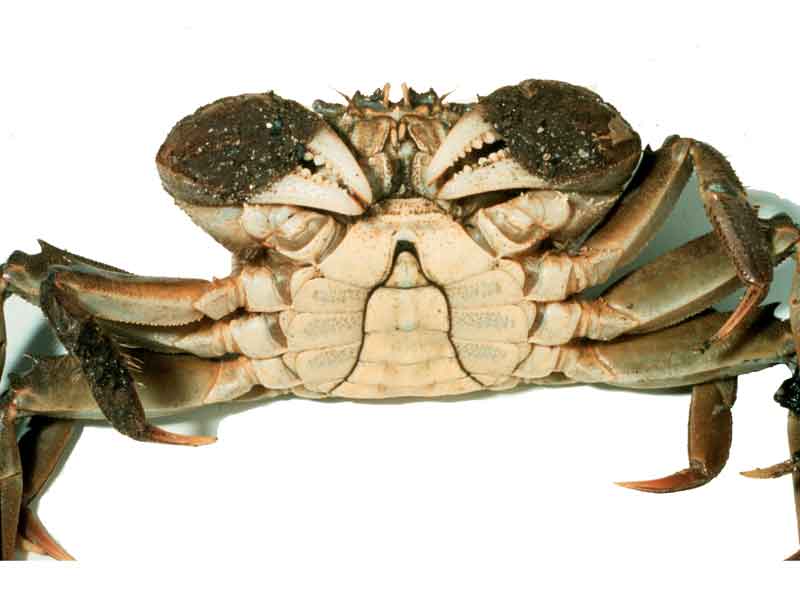
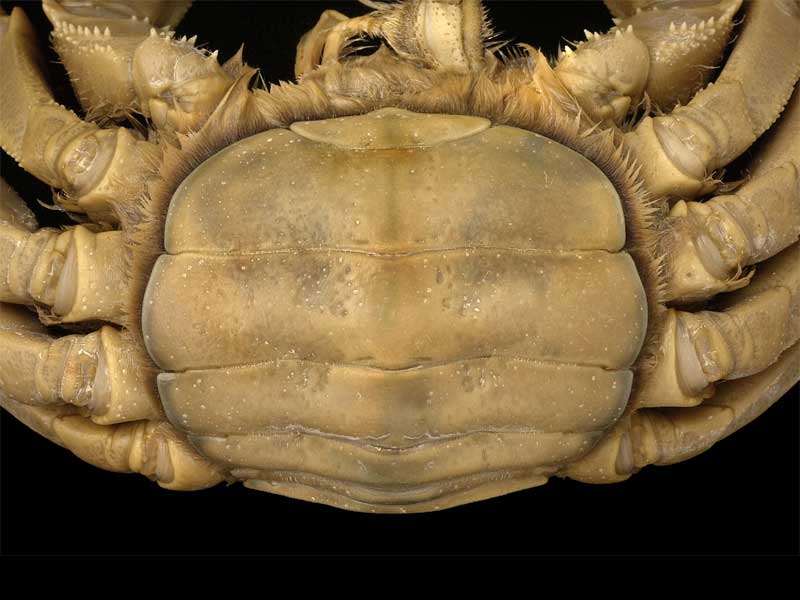
![Eriocheir sinensis: carapace is quadrate [squarish].](/assets/images/marlin/species/web/o_erisin2.jpg)
